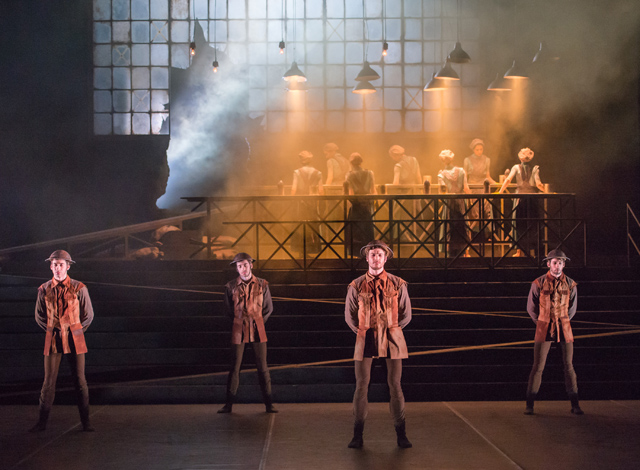Commissioned for English National Ballet in 2014 to commemorate the centenary of the Great War, Lest We Forget is both a reflection and an emotional journey into the lives and dreams of the millions of people who were dragged into the conflict. Liam Scarlett, Russell Maliphant and Akram Khan courageously explore the unbearable uncertainty about the future of these men and women. Each has a particular take on the permanent fear of an attack, the emptiness that followed the departure of the loved ones and the new roles taken up by spouses, daughters and sisters at home, as men left to the trenches.
Lest We Forget showcases English National Ballet’s talented dancers in a fantastic and absorbing collection of dance-works created by the three choreographers. The three sections make an evening to remember and serve to remind theatregoers, balletomanes, dance students, dance teachers and industry professionals that we need to embrace change and encourage collaboration to ensure ballet evolves and retains relevance for future generations.
The first piece is 'No Man’s Land', choreographed by Liam Scarlett. 14 dancers in Blue dresses and brown leather cascade around the bleak setting of a desolate place which has the feeling of a factory line warehouse for the war. The stage is turned into a dusty factory with broken windows. Upstage, women wipe the sweat from their faces, sigh and briefly rely on the benches. We feel their tiredness from endless working days while men slowly head to war. The focus of No Man’s Land is the theme of the men and women at war imagining loved ones left behind. The emotional and intellectual weight of the drama is explored through clever metaphor and in choreography that is hauntingly ardent and true. The baggage of war: the women on men’s backs are both their mainstay and their burden.
The second piece called 'Second Breath', directed and choreographed by Russell Maliphant, was very different to the first. Maliphant doesn’t follow a narrative, and instead uses the dancers to create something very emotive. Its 18 dancers are united in a keening, spiralling chorus of loss, accompanied by the recorded voices that recite the terrible numbers of the dead and the constant crackling of a gramophone. This piece is a display of modern contemporary ballet where the most minimal movement can be the most profound register of emotion. The ensemble of 18 dancers focus was muscular movements and harrowing expressions which summed up the emotional void of conflict more potently it had a moving strength and darkness to it, particularly as the setting is in almost literal darkness, inspiring a feeling of the dreamscape.
The final piece and most captivating was by Akram Khan’s 'Dust' - Khan choses to symbolise the horror experienced by millions by having the 24 dancers passionate, tortured and sad, but with eyes averted from the audience, staring instead fiercely at their hands, up at heaven, or down at the ground. Unlike the blank stares with which the characters faced us, these private agonies tore at the heartstrings. Simple figures of line, linked hands and unison conveyed the collectiveness of the war experience. Stunning design, with a haunting red-rippled bank of dry earth, clouds of dust. Dust was the highlight of the 3 pieces for me as it was not only modern and contemporary but elegant and enchanting.
As someone who wouldn’t normally go to the ballet, I would recommend Lest We Forget as a brilliant first insight into the world of ballet performance and a great introduction to the art form.
Reviewer: Katie Leicester
Reviewed: 24th November 2015

